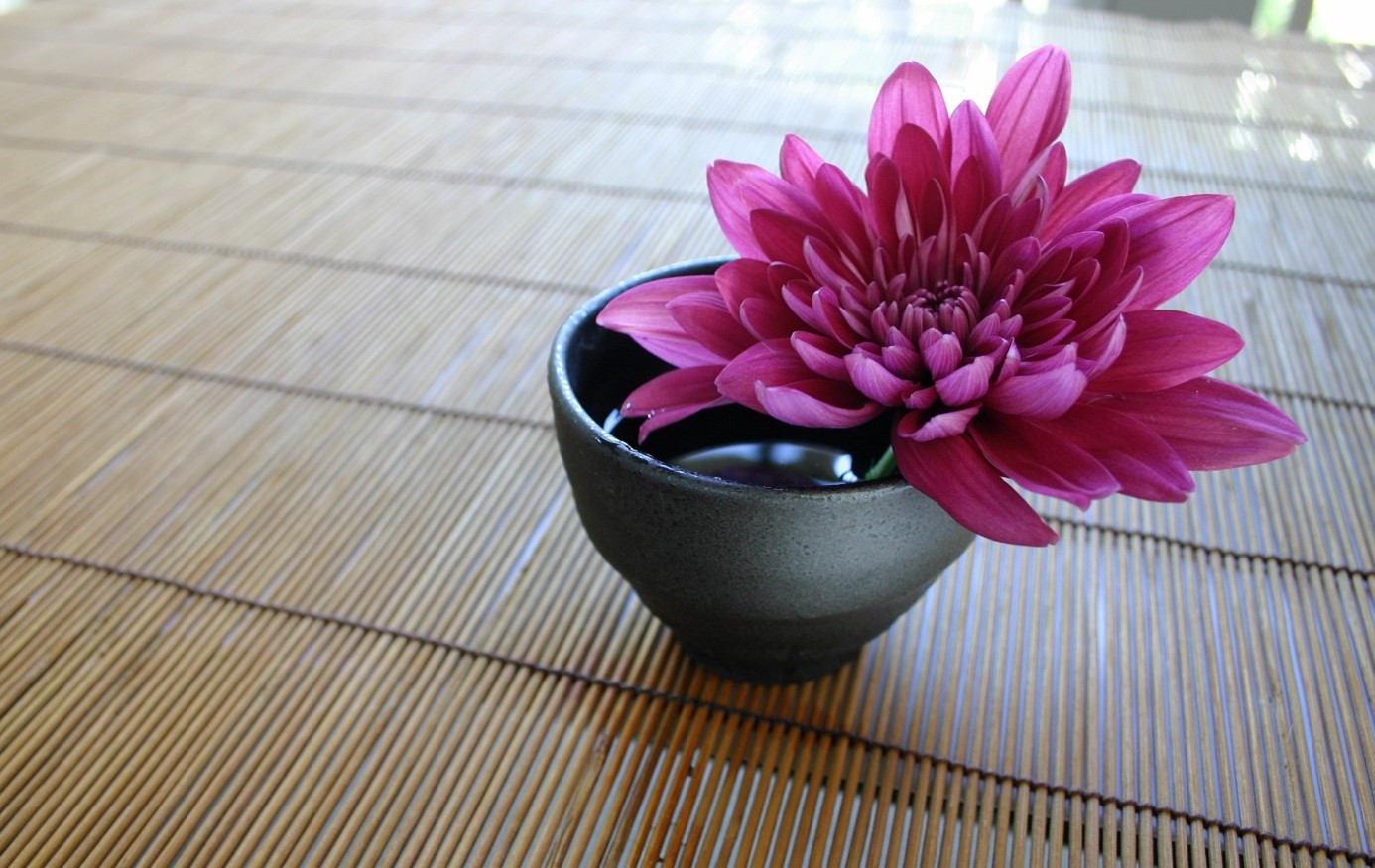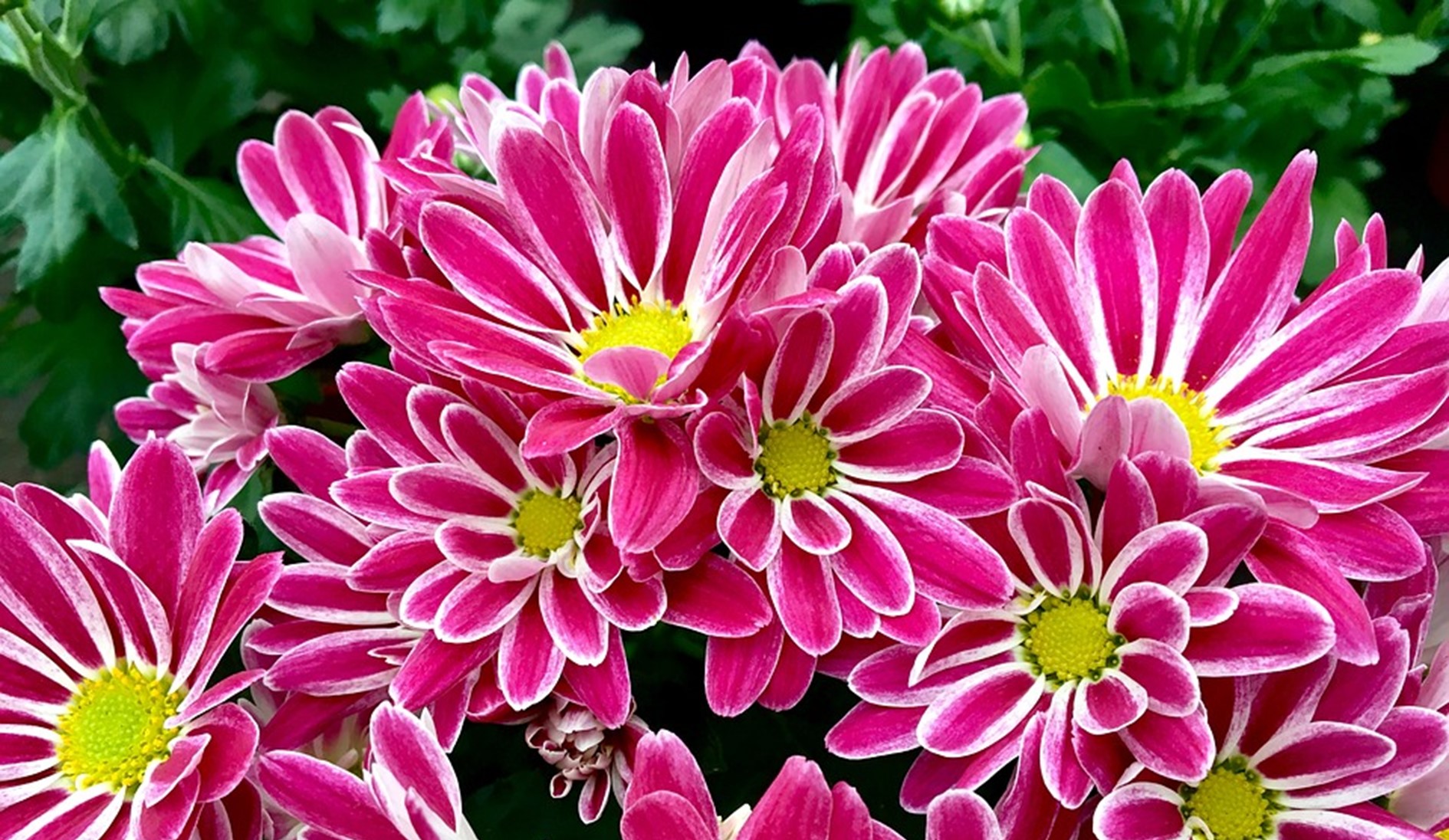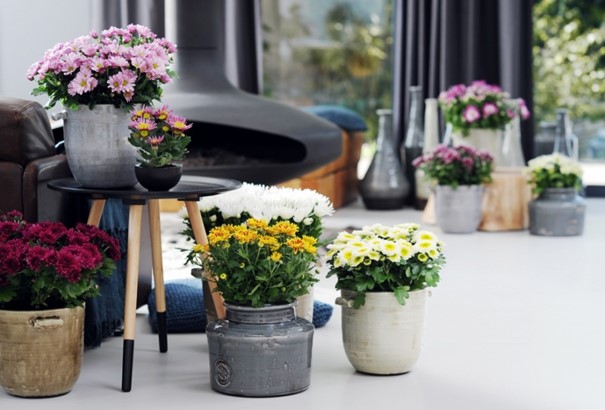As November gets underway, Chrysanthemums are blooming everywhere. In stores, but also in gardens, on terraces and balconies. They're the kings of autumn: they bloom for a long time and their bright colors brighten up sunless days.
Originally from China, where they have been cultivated since antiquity, chrysanthemums first appeared in Europe at the end of the 18th century.
A cult plant in Japan, it has been the emperor's emblem since the 13th century and is celebrated there today as a symbol of pleasure and happiness. And kiku (its Japanese name) is found on passports and the 50-yen coin.


In China, a symbol of longevity, it is consumed as an infusion. Chrysanthemum flower tea is renowned for its medicinal virtues, notably for purifying the liver, improving circulation and slowing down the aging process
In Europe, the best-known varieties are the "florists' chrysanthemums", which are particularly popular at All Saints' Day. Considered the "daisy of the dead", Chrysanthemums invade cemeteries every year from mid-October onwards. But do you know the origins of this tradition?
This tradition dates back to the First World War. On the first anniversary of the Armistice of 1918, Clémenceau is said to have called on the French to put flowers on the graves of fallen soldiers. As a seasonal flower (and one that could withstand a moderate frost) was needed, the chrysanthemum multiplied in cemeteries. Since then, 25 million pots of chrysanthemums have been placed on French graves every year.


Crédit : @oasisfloralproducts.bnl
In florists' shops and garden centers, autumn chrysanthemums can be found in a wide range of seasonal floral arrangements.
In Australia, chrysanthemums are given to mothers on Mother's Day.
Chrysanthemum varieties
The chrysanthemum genus belongs to the Asteraceae family and includes some twenty perennial species and hundreds of varieties and hybrids.
Perennial or annual, Chrysanthemums are easy to care for. The Greek etymology of the name, meaning golden flower, reminds us that the first varieties were mostly yellow.
An autumn plant par excellence, chrysanthemums are now available in all the colors of the season: yellow, orange and red, as well as a whole range of pinks, mauves, garnets, whites and greens. Ideal for keeping your decor in bloom until early winter.


What's more, chrysanthemum flowers come in all sorts of shapes: single, double, pompons, spiders, balls... the choice is vast! From the simple "daisy" to the "pomponette", they're sure to delight even the most demanding.


Where to plant chrysanthemums?
In recent years, chrysanthemums have returned to gardens and terraces. And all the better for it! Their magnificent colors last until late autumn, long after the summer blooms.
Chrysanthemums can be grown both in the ground and in pots. They thrive best in sunny locations with well-drained soil.



Photo credit @Scheurich
In the garden, it flourishes in solid or multicolored beds, flowerbeds or borders. And it looks great in a window box, combined with other seasonal plants, or even in a bouquet with pretty bronze foliage.
What should you combine them with?
Chrysanthemums are a must in autumn arrangements, and blend perfectly with other seasonal plants. The possibilities are almost endless, provided, of course, that you respect the needs of each plant (watering, exposure, potting soil, etc.). If in doubt, ask a nurseryman for advice.


You can mix and match shapes, colors and foliage to suit your taste:
- Flowering plants such as asters, dahlias and heathers
- Small shrubs such as caryopteris, perovskia, lavatera
- Plants with decorative or colourful foliage, such as cineraria, holly, ivy, etc.
- Small conifers
- Grasses
Growing and caring for potted chrysanthemums
Chrysanthemums are low-maintenance. They flower abundantly and for a long time.
However, a few simple gestures will help you get the most out of it.
- Choose a sunny spot and give your plants good potting soil.
- Water regularly but sparingly, only when the soil is dry.
- Remove spent flowers as you go along to encourage new growth.
- You can also cut back young shoots by 10-15 cm to encourage branching.
- For larger flowers, remove flower buds from secondary shoots.
- After the first hard frost, cut your chrysanthemums back to ground level and mulch them to protect them from winter. If you have the opportunity to bring them inside, place them in a cool but well-lit spot.
